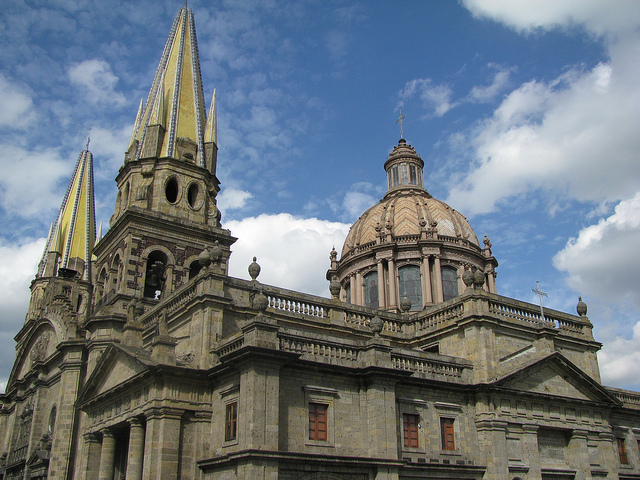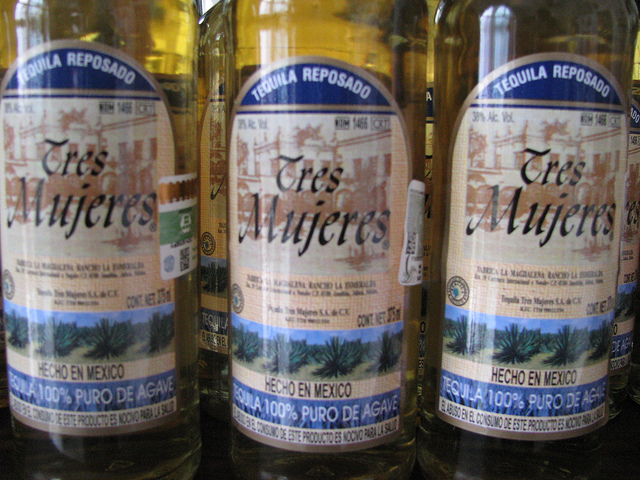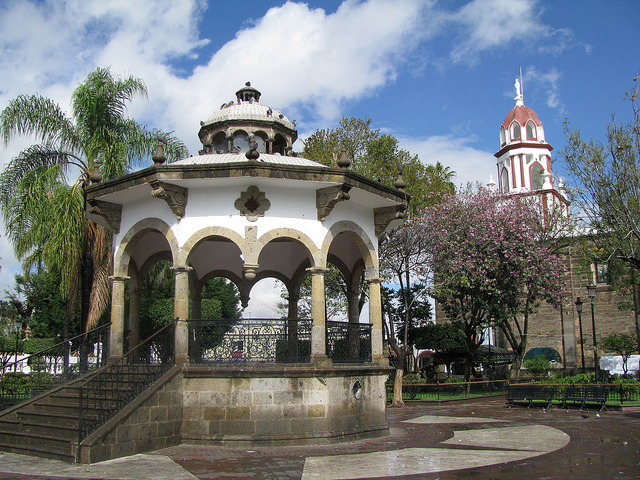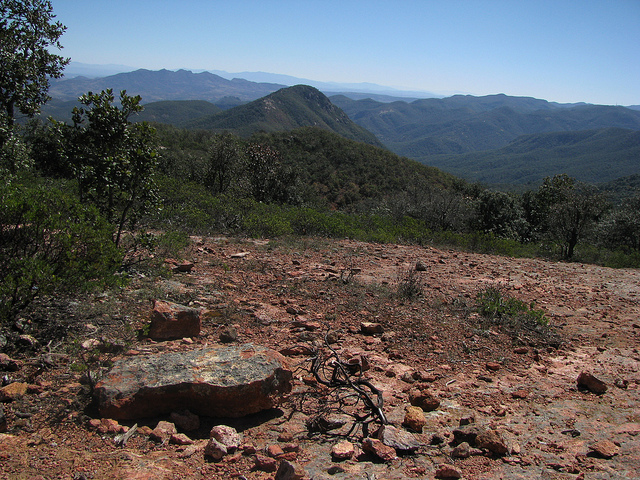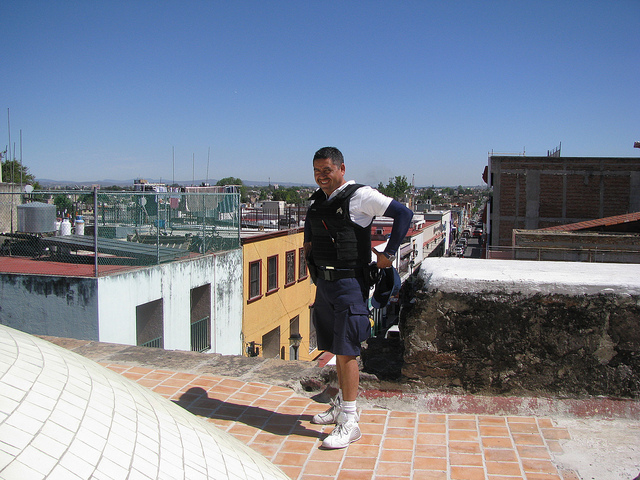There are two things that I am very passionate about: traveling and learning languages. I like to combine both of them where I can and at least once a year I try to go on a language study trip. Learning languages is simply one of the best ways to immerse oneself in a culture and get to know the country and the people as an insider.
Spanish is my favourite language and I have had the opportunity to study Spanish in 2005 in Cuba, at the University of Havana, and at two different language schools in Cuernavaca, Mexico, in 2006. Being on a tight budget I was looking around again for another language study destination, and since I was going to use my Airmiles for the flight, I had to choose a close destination. After some substantial research I ended up with Guadalajara, Mexico’s second largest city, a place I had wanted to visit for a long time.

The cathedral of Guadalajara
Guadalajara is located on the west side of Mexico, in the state of Jalisco, about three hours inland from the Pacific coast. With around 4 million inhabitants, Guadalajara is a centre of business and technology and has the highest GDP per capita in Mexico. A 2007 survey called “Cities of the Future” by FDi Magazine designated Guadalajara as the highest ranking city in Mexico, and indicated that it has the second strongest economic potential of any North American city behind Chicago. Due to the concentration of companies in the electronics and information technology sectors Guadalajara is also often referred to as the “Silicon Valley of Mexico”.
Guadalajara is a very dynamic and growing area, and tourism has become one of the city’s major economic factors. Referred to as the “City of Roses” or “Mexico’s Pearl of the West”, Guadalajara boasts many monuments, parks and attractions. It is also known as the birthplace of mariachi music, and the surrounding area is the centre of Tequila production. With its location on the western side of Mexico, the Pacific Coast is close by and several other colonial cities are easily reached within a three or four hour bus ride.

View towards the Hospicio Cabañas, a UNESCO World Heritage Site
This was perfect for me because I was planning to spend about nine days in Guadalajara while I would spend the remaining time on weekend excursions outside of the city. After doing some extensive research on weekend excursions from Guadalajara I settled on a getaway to the historic mining city of Guanajuato, and also planned another weekend trip to the city of Morelia and surrounding Lake Pátzcuaro. Both of these cities are designated UNESCO World Heritage Sites, and I was looking forward to experiencing three major Mexican cities on this trip.
My new adventure started very early on the morning of February 3 when I got up at about 3 am to get ready for my drive to Toronto’s Pearson International Airport. On the plane I sat beside a nice older Canadian gentleman who was telling me he was traveling to Melaque, a Mexican town on the Pacific coast that has been attracting a large number of Canadian winter vacationers. He was also flying to Guadalajara and planning to take a four-hour bus ride to his destination to reconnect with some old friends.

Downtown Guadalajara
Mexico has an increasing number of destinations that attract American and Canadian retirees and expatriates who want to get away from the cold northern winters. First and foremost among these retirement destinations is San Miguel de Allende which boasts about 11,000 to 12,000 foreign residents, followed by Ajijic in the Lake Chapala Region, located less than an hour from Guadalajara. I was planning to make an excursion to Ajijic to explore the topic of “living / retiring in Mexico”, and to do so I had set up an interview with a recently retired Canadian teacher who has relocated to Ajijic.
Although I am still very far away from retirement age, the topic of retiring or simply living abroad has fascinated me for a long time, and on this trip I was going to spend more time researching this topic locally. My friend Carol had set me up with a friend of hers, Greg Clarke, a retired Toronto teacher, who was willing to meet me and talk about his new lifestyle in Mexico. I was looking forward to this excursion.

Sunset on Lake Chapala
After a brief stopover in Mexico City I arrived in Guadalajara at about 5:30. Wouter Stut, the owner of the Guadalajara Language Center where I was going to study Spanish, came to pick me up at the airport. The weather was horrible; it was cold, clammy and raining cats and dogs. During our drive, I learned a little bit more about Wouter: now in his 30s, he originally hails from Holland and used to be a computer programmer. He came to Guadalajara seven years ago and shortly thereafter started his language school.
The Guadalajara Language Center offers courses of all levels in both English and Spanish, and hosts a large number of foreign language students throughout the year. It is located in Tlaquepaque, a former artist’s village that is now part of the municipality of Guadalajara. Tlaquepaque is a very safe and scenic area and I was looking forward to studying Spanish here.

Downtown Tlaquepaque
I was frozen to the bone by the time we arrived at my local abode, a family homestay that was literally two minutes from the language school. I would have been hard pressed to find closer accommodation, and Graciela, the family matriarch, welcomed me to her house. The language school offers several different accommodation options, from homestays (stays with a local family) and luxury houses, to bed and breakfasts to shared or private apartments and hotels. I had chosen the homestay option because this would allow me to practice my Spanish after school and immerse myself more deeply in Mexican culture. It is also a very reasonable option in terms of cost that might cost between $20 to $25 a night, depending on whether you choose a house with a pool or without.
Wouter helped me set up my wireless Internet connection, and after setting myself up, I walked across the courtyard to the house of Graciela’s daughter Claudia who also hosts international language students. I got introduced to Claudia’s three year old nephew Kiyoshi who was just singing a very well-rendered version of Mozart’s “Eine kleine Nachtmusik” (“A Little Night Music”). I immediately felt part of this family-oriented environment.

Mariachi sculptures in Tlaquepaque
Claudia invited me to sit down and offered me to have dinner with her other two language students: Michael, a young man in his 20s from California who was staying in Mexico for five months, and George, a retired American health care administrator in his 70s. The four of us had an interesting conversation in Spanish around the dinner table while we enjoyed Claudia’s home cooking: chicken soup and “gorditas de mantequilla”, which are essentially fried dough pockets with melted butter on top.
Well, my first day had been a success: I had reached Guadalajara safely, got set up with my local family and even had a tasty evening meal and a Spanish practice around the dinner table. I was already excited about my next day in Guadalajara, keeping my fingers crossed that the weather would improve and I would get to enjoy my time in Mexico.
